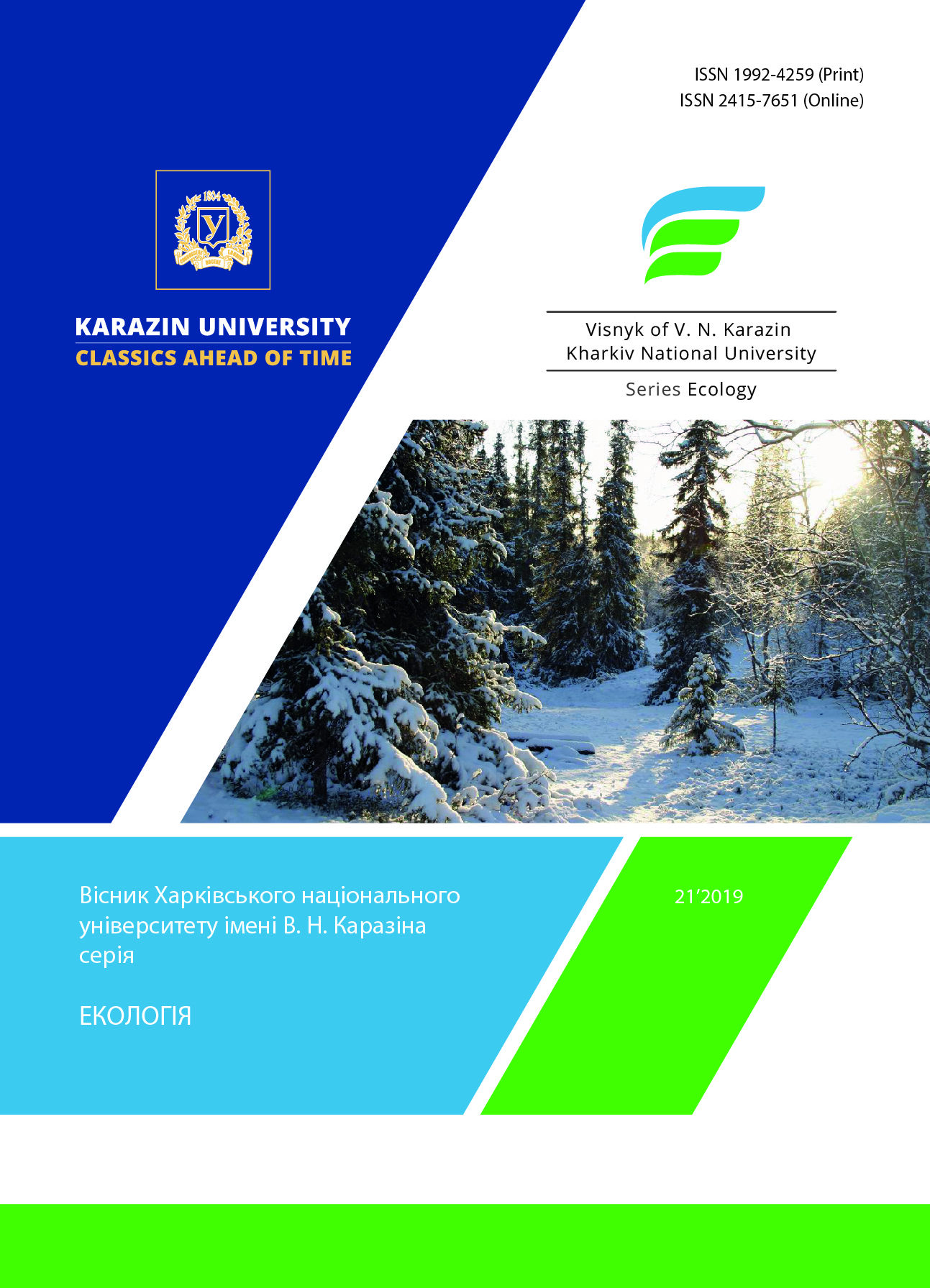Environmentally Safe Method of Localization of Soil Pollution in Emergency Situations of Technogenic Nature
Keywords:
soil, hardening foam, toxic liquid, gelation, absorbent, catalyst, foaming agentAbstract
Puporse. Development a method for the localization of emergencies associated with the leakage of volatile toxic liquids, by using the foams with adjustable curing time.Methods. Surface insulation method of the spilled toxic liquid by using the air-mechanical foam.Results. The results of the development a method for the localization of emergencies associated with the leakage of volatile toxic liquids, by using the foams with adjustable curing time are presented. The new scientificresult consists in the use of gelation processes, to obtain an insulating agent with a specified time of curing. It has been established that the most effective means that reduce the rate of transition of toxic liquids to the gas phase are those that ensure the liquid surface isolation. It is proposed to use foam with the time of cure that can be adjust ed. Experimentally determined gel times for two gel forming systems (NH4Cl + Na2O • 2,5SiO2 and (NH4)2SO4+ Na2O ∙ 2,5SiO2). On the basis of the data obtained, the concentrations of the gel formulation and the gelation catalyst with the gel time were selected in the interval of 30-60 s.
Conclusions. The developed systems allow to achieve a long process of isolation at a lower specific consumption of components. It is shown that the use of the proposed components in the soil is an environmentally safe process.
References
Пожаротушение и аварийно-спасательные работы: справочник. / Под общ. ред. О. А. Назарова, Н. Н. Кулешова. Харьков: АЦЗУ, 2006. 376 с.
Грек А. М., Сакун О. В., Григорєв О. М. Аварии на радиационно, химически и биологически опасных объектах:справочник. Харьков: ФВП НТУ «ХПИ», 2012. 172 с.
Слепужніков Є.Д., Тарахно О.В., Пономаренко Р.В., Буц Ю.В. Удосконалення контролю відбору проб рідких, газоподібних та сипучих речовин при дослідженні техногенного впливу на довкілля. Людина та довкілля. Проблеми неоекології. 2018. № 30. . С. 148–157.
Бариев Э. Р. Чрезвычайные ситуации с химически опасными веществами. Минск; ИВЦ Минфина, 2008. 256 с.
Zasady organizacji decontominacji w warunkach scazenia srodkami CBRN w pzypadku zdarzen masowych podczas Swiatowych Dni Mlodziezy / PSPRP Polska. Warszawa, 2016. 20 s.
Киреев А. А. Экспериментальное исследование влияния характеристик гелеобразного слоя на его изоли-рующие свойства по отношению к парам органических жидкостей. Проблеми надзвичайних ситуацій. 2017. №26. С.43‒48.
Абрамов Ю. А., Киреев А. А. Гелеобразующие огнетушащие и огнезащитные средства повышенной эф-фективности применительно к пожарам класса А. Харьков: НУГЗУ, 2015. 254 с.
Дадашов И. Ф., Киреев А. А. Повышение эффективности тушения горючих жидкостей в резервуарах путем использования гелеобразующих средств. Proceedings of Azerbaijan statemarine academy. 2016. №2. С.72‒76.
Вспененный гель кремнезема, применение вспененного геля кремнезема в качестве огнетушащего сред-ства и золь-гель способ его получения: пат. 2590379 Российская Федерация. №2015110625/05; заявл. 26.03.2015; опубл. 10.07.2016, Бюл. №19.
Киреев А. А., Коленов А. Н. Пути повышения эффективности пенного пожаротушения. Проблемы по-жарной безопасности. 2008. №24. С.50‒53.
Киреев А. А., Коленов А. Н. Исследование пенообразования в пенообразующих системах. Проблемы пожарной безопасности. 2009. №25. С.59‒64.
Mewis J. Thixotropy. Advances in Colloid and Interface Science. 2009. P. 214‒227.
Galla S., Stefanicky B., Majlingova A. Experimental comparison of the fire extinguishing properties of the fire-sorb® gel and water. Conference Proceedings of 17th International Multidisciplinary Scientific Geo Conference. 2017, P. 439‒446.
Молочкина Д. И. Жидкая самотвердеющая смесь: пат.837551 СССР. №837551; заявл. 12.04.1979; опубл. 15.06.1981, Бюл. №22.
Downloads
Published
Issue
Section
License
Authors reserve the right of attribution for the submitted manuscript, while transferring to the Journal the right to publish the article under the Creative Commons Attribution License. This license allows free distribution of the published work under the condition of proper attribution of the original authors and the initial publication source (i.e. the Journal)Authors have the right to enter into separate agreements for additional non-exclusive distribution of the work in the form it was published in the Journal (such as publishing the article on the institutional website or as a part of a monograph), provided the original publication in this Journal is properly referenced
The Journal allows and encourages online publication of the manuscripts (such as on personal web pages), even when such a manuscript is still under editorial consideration, since it allows for a productive scientific discussion and better citation dynamics (see The Effect of Open Access).

